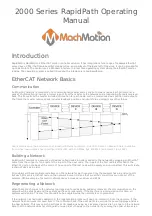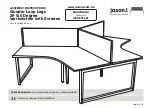
2/4
Vakuum-Schaltröhren
Der grundsätzliche Aufbau der Vakuum-Schaltröhren für die
V-Schalter 3AH1 ist aus der Schnittdarstellung Fig. 2/6 zu
ersehen.
Die Vakuum-Schaltröhre (30.) ist am Schaltröhrenträger (20.)
befestigt. Das feststehende Schaltstück (31.) ist direkt mit
dem Gehäuse verbunden. Das bewegbare Schaltstück (36.)
ist fest mit dem Anschlußbolzen (36.1) verbunden und wird in
der Führung (35.) zentriert. Der Metallfaltenbalg (34.) bildet
die vakuumdichte Verbindung zum Röhrengehäuse.
Vacuum interrupters
The basic construction of the vacuum interrupters for the
3AH1 vacuum circuit-breaker is shown in the sectional view in
Fig. 2/6.
Depending on its type, the vacuum interrupter (30.) is fixed to
the upper interrupter support (20.). The fixed contact piece
(31.) is connected directly with the housing. The moving
contact piece (36.) is fixed to the terminal bolt (36.1) and is
located centrally in the guide (35.). The metal bellows (34.)
forms the vacuum-proof connection to the interrupter housing.
The vacuum interrupters fitted in the 3AH1 vacuum circuit-
breakers are type-approved in accordance with the X-ray
regulations of the Federal Republic of Germany. They conform
to the requirements of the X-ray regulations of January 8,
1987 (Federal Law Gazette Page 144) § 8 and Annex III
Section 5 up to rated short-time AC voltage stipulated in
accordance with DIN VDE/IEC.
Die in den V-Schaltern 3AH1 eingebauten Vakuum-Schalt-
röhren sind nach der Röntgenverordnung der Bundesrepublik
Deutschland bauartzugelassen. Sie erfüllen die Forderungen
nach RöV vom 8. 1. 1987 (BGBl. I. Seite 144) § 8 und
Anl. III Abs. 5 bis zur Höhe der nach DIN VDE/IEC festgeleg-
ten Bemessungs-Kurzzeit-Wechselspannung (Nenn-
Stehwechselspannung).
Fig. 2/6 Vakuum-Schaltröhre
Vacuum interrupter
36.1
35.
34.
31.1
36.
31.
















































